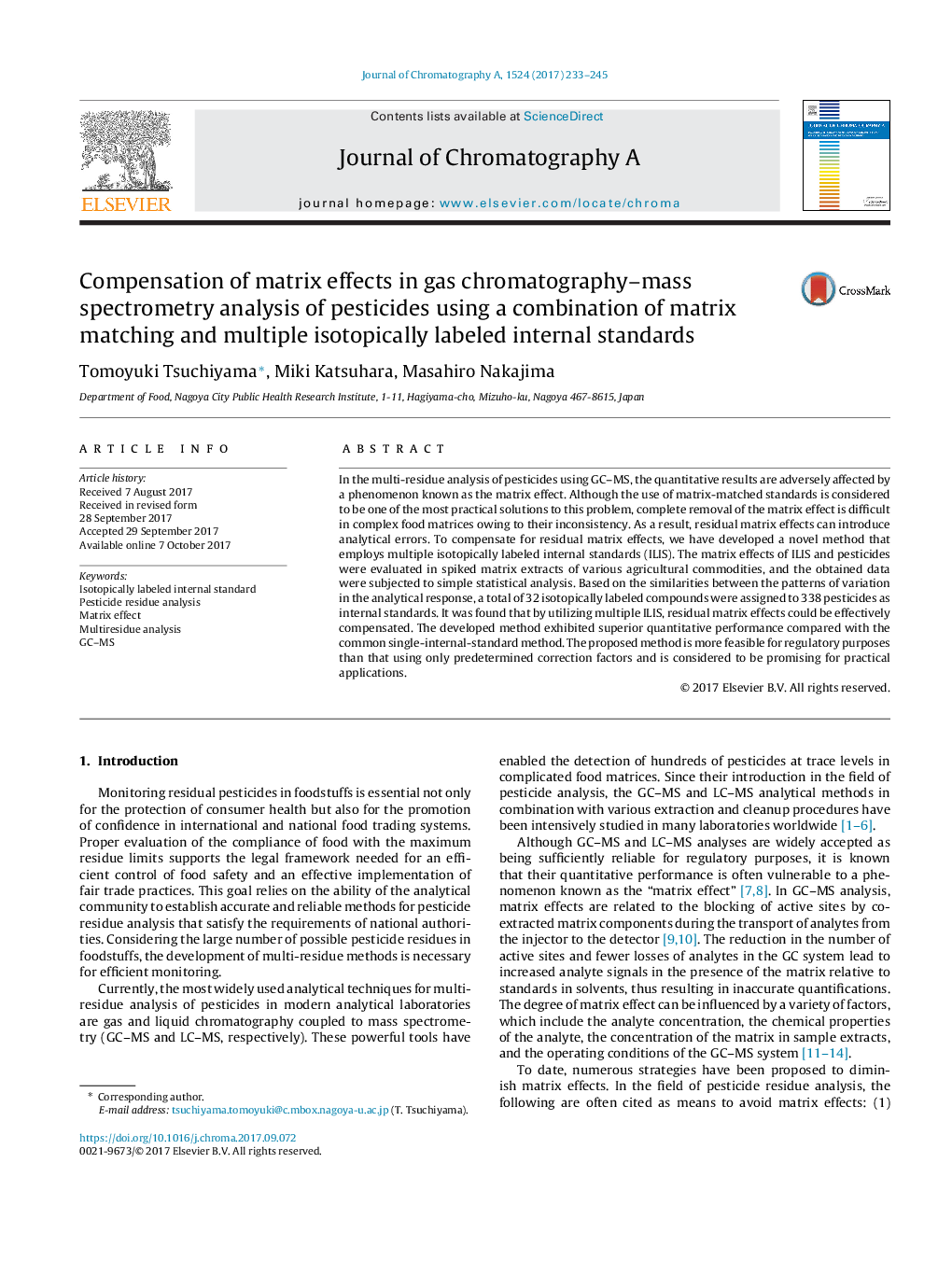| Article ID | Journal | Published Year | Pages | File Type |
|---|---|---|---|---|
| 7609696 | Journal of Chromatography A | 2017 | 13 Pages |
Abstract
In the multi-residue analysis of pesticides using GC-MS, the quantitative results are adversely affected by a phenomenon known as the matrix effect. Although the use of matrix-matched standards is considered to be one of the most practical solutions to this problem, complete removal of the matrix effect is difficult in complex food matrices owing to their inconsistency. As a result, residual matrix effects can introduce analytical errors. To compensate for residual matrix effects, we have developed a novel method that employs multiple isotopically labeled internal standards (ILIS). The matrix effects of ILIS and pesticides were evaluated in spiked matrix extracts of various agricultural commodities, and the obtained data were subjected to simple statistical analysis. Based on the similarities between the patterns of variation in the analytical response, a total of 32 isotopically labeled compounds were assigned to 338 pesticides as internal standards. It was found that by utilizing multiple ILIS, residual matrix effects could be effectively compensated. The developed method exhibited superior quantitative performance compared with the common single-internal-standard method. The proposed method is more feasible for regulatory purposes than that using only predetermined correction factors and is considered to be promising for practical applications.
Related Topics
Physical Sciences and Engineering
Chemistry
Analytical Chemistry
Authors
Tomoyuki Tsuchiyama, Miki Katsuhara, Masahiro Nakajima,
